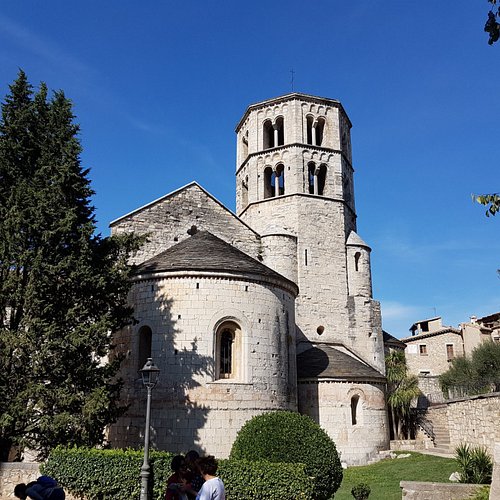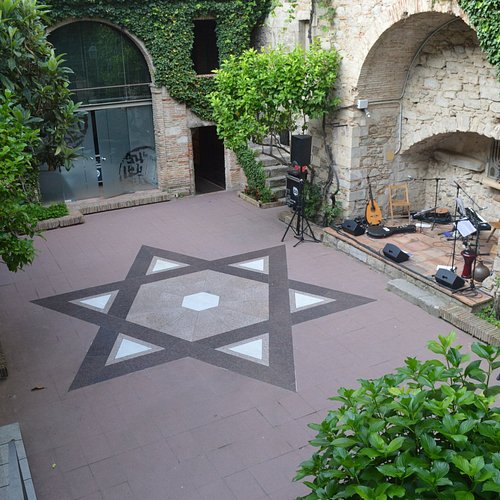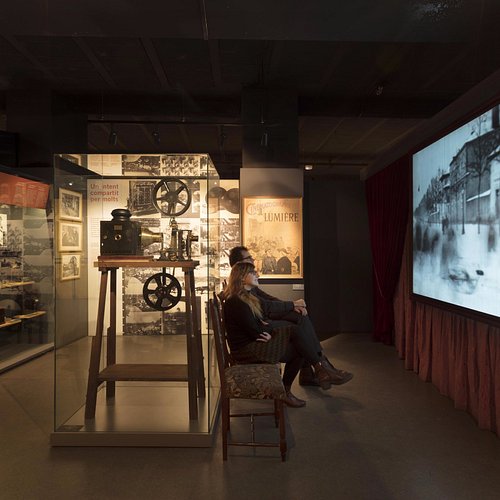The 10 Best Museums in Girona, Catalonia
One of the most historic sites in Spain, Girona lies in northeast Catalonia, just 99 km (62 mi) from Barcelona. Founded by Romans, the city later was taken over by Moors and Franks before finally falling under the rule of Barcelona. Influenced by different cultures and religions, the city beckons visitors with beautiful architecture. The Old and New Town offer many opportunities to pleasurably get lost and observe local life and culture.
Restaurants in Girona
1. Museu d'Arqueologia de Catalunya
Overall Ratings
4.5 based on 120 reviews
In this monastery, a jewel of Catalan Romanesque architecture, you can learn about the earliest history of humankind in the Girona region, from prehistory to the mediaeval period, through the collection of archaeological objects on display.
Reviewed By pookie099 - Tavira, Portugal
Tried to see the chapel on our last visit four years ago but an exhibition seemed to be taking place so it wasn't possible. So glad I came back. Worth visiting for the chapel alone, very atmospheric 12th Century building and the Rose Window (no glass) is quite awesome. If, like me, you are into history and archeology (or even if you're not!), you will really enjoy this museum which traces civilisation from Neanderthal through to modern times with artefacts to illustrate. Most of the exhibits are labelled in English as well as Castilian Spanish and Catalan, which is not also so. Only spent a couple of hours here but could have spent much longer!
2. Girona Art Museum
Overall Ratings
4.5 based on 131 reviews
Girona Art Museum is located in the incomparable setting of the former Bishop’s Palace, a building first documented in the 10th century. It now houses the most important art collection in Girona province, with pieces dating from Romanesque times to the early 20th century.The building still conserves several spaces that bear witness to its original function, notably the Episcopal gaol and the superb garden, open to the public on several occasions throughout the year.
3. The Museum of Jewish History
Overall Ratings
4.5 based on 410 reviews
The main aim of the Museum is to preserve and reflect the history of the Jewish communities of Catalonia, which throughout the entire medieval period formed part of, and made a decisive contribution to, the history of the country and its cultural and scientific development. In most cases an attempt has been made to illustrate the explanations given during the visit to the Museum with examples of items originating from Girona's own Jewish history. These examples, which may be in documentary, archaeological or pictorial form, thus offer a general explanation of the pattern of Jewish life in medieval Catalonia.
Reviewed By backpacker31 - Boynton Beach, United States
I’ve visited numerous Jewish museums around the world and most focus on what life was like when the Jewish people lived (and prospered) there. This museum, while it does give an accounting of what Jewish life was like, due to the fact that Jews haven’t lived in Girona since the late 1400’s, makes giving a comprehensive history all the more difficult. Recent excavations offer tangible evidence of what life was like here in the Call (Jewish quarter). The Mikveh area was especially fascinating. When walking around the Call, see if you can spot the indentations in the doorways where mezuzahs once hung. What this museum does differently, however, is to give the history of Jewish persecution, led by Spain’s Catholic Church and it’s political rulers. What happened in Girona’s Call and throughout the Iberian Peninsula is no different than what happened in Nazi Germany and throughout 1930’s-40’s Europe. The only difference is that Spain gave the Jews a ‘choice’ to convert. The museum shows how lies, heresy, fear, ignorance and intolerance eventually led to the Inquisition. I commend the museum for preserving what was once a rich history here in Girona and for educating its visitors, especially its young visitors that we must do all we can to never repeat this dark chapter in history - here in Spain or anywhere on Earth!
4. Cinema Museum Girona (Museu del Cinema)
Overall Ratings
4.5 based on 420 reviews
Experience and view the history of moving images, from shadow theatre to the cinema, with the Tomàs Mallol Collection. An interactive, educational and entertaining exhibition, interesting for all ages.
Reviewed By Michaelmackle
You start on the third floor and work your way down to the ground floor with each floor revealing new secrets about the art of cinematography. It is a seamless experience and one that you will never forget. The next tie I'm in Girona this will be the first place I will visit again.
5. Casa Maso
Overall Ratings
4.5 based on 122 reviews
The Foundation is a non-profit-making body set up in 2006, is responsible for the conservation and the visitor management of Masó House, the Foundation also promotes research, conservation, and dissemination of Masó’s works and of Catalan Noucentisme in general. It also organizes exhibitions, publications, and educational activities for all ages in order to build awareness of the importance of architecture and urban planning for people and society at large.
Reviewed By flj3 - Potters Bar, United Kingdom
Most people will be familiar with Modernisme in Catalan art, or as a wider artistic movement in the late 19th century in Europe, but who has ever heard of Noucentisme? This was a fascinating discovery when preparing for a visit to Girona to look at Modernista architecture, and which led us to visit the Casa Masó, the home of the Catalan architect Rafael Masó i Valentí. The guided visit is essentially about the house and the family, not to show you or explain Masó's work, although the introductory video will give you some idea. The house is in reality very small, despite being a merger over time of four separate dwellings, so there does not appear to be any space for displays of designs or photographs of architecture. For that you can follow the 'Masó Route' on foot in Girona, probably best with a guide, or visit places such as Sant Feliu de Guixols or S'Agaro on the coast. In whatever case, if you do have any real interest in the history of architecture and design in the early 20th century, do take the time to research Noucentisme - essentially a return to classical values after what was possibly seen as the excesses of modernity, as the movement does explain some aspects of present day Catalan identity still visible today.
6. Musee de la Cathedrale.
Overall Ratings
4.5 based on 23 reviews
Reviewed By JOHNROBERTS57 - Kendal, United Kingdom
It is a beautiful old cathedrale and the museum adds to its splendour the artifacts are just stunning a tad OTT but religion it those days had the funds and show to portray this wealth.
7. Museu d'Historia de Girona
Overall Ratings
4.0 based on 78 reviews
8. Casa Pastors
9. Espai Santa Caterina
Overall Ratings
4.0 based on 14 reviews










